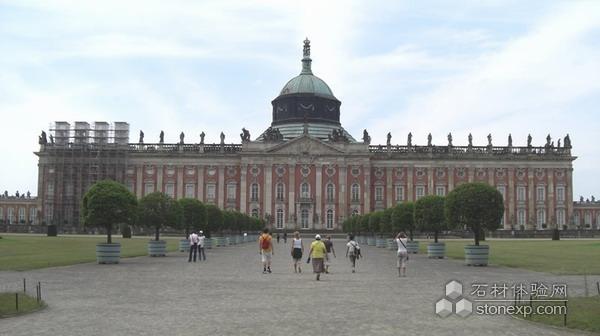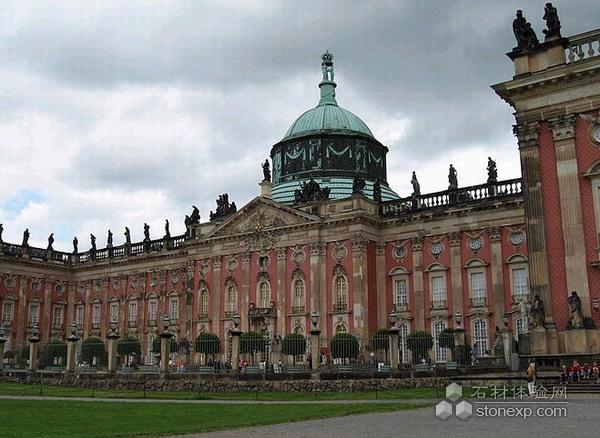The Sanssouci In Germany
www.stonexp.com
2010-11-06 17:17:04
Popularity Index:0
Source:Internet
|
Sanssouci is the former summer palace of Frederick the Great, King of Prussia, in Potsdam, near Berlin. It is often counted among the German rivals of Versailles. While Sanssouci is in the more intimate Rococo style and is far smaller than its French Baroque counterpart, it too is notable for the numerous temples and follies in the park.
The palace was designed by Georg Wenzeslaus von Knobelsdorff between 1745 and 1747 to fulfil King Frederick's need for a private residence where he could relax away from the pomp and ceremony of the Berlin court. This is emphasised by the palace's name: a French phrase (sans souci) which translates loosely as "without worries" or "carefree" symbolising that the palace was a place for relaxation rather than a seat of power. The palace is little more than a large single-storey villa—more like the Château de Marly than Versailles. Containing just ten principal rooms, it was built on the brow of a terraced hill at the centre of the park. Frederick the Great (1712–86).After World War II, the palace became a tourist attraction in East Germany. It was fully maintained with due respect to its historical importance, and was open to the public. Following German reunification in 1990, the final wish of Frederick came to pass: his body was finally returned to his beloved palace and buried in a new tomb overlooking the gardens he had created. Sanssouci and its extensive gardens became a World Heritage Site in 1990 under the protection of UNESCO;[2] in 1995, the Foundation for Prussian Palaces and Gardens in Berlin-Brandenburg was established to care for Sanssouci and the other former imperial palaces in and around Berlin. These palaces are now visited by more than two million people a year from all over the world.
  |



